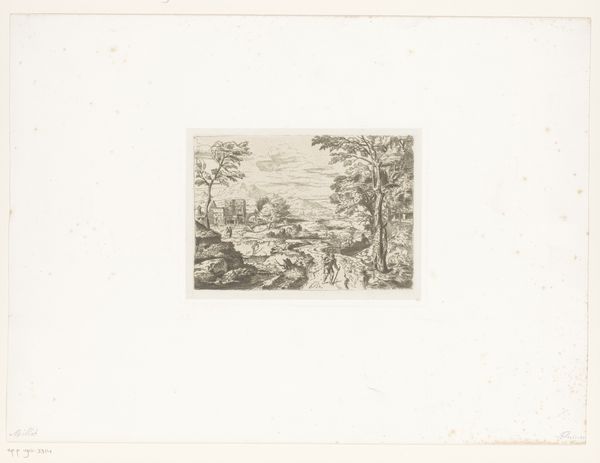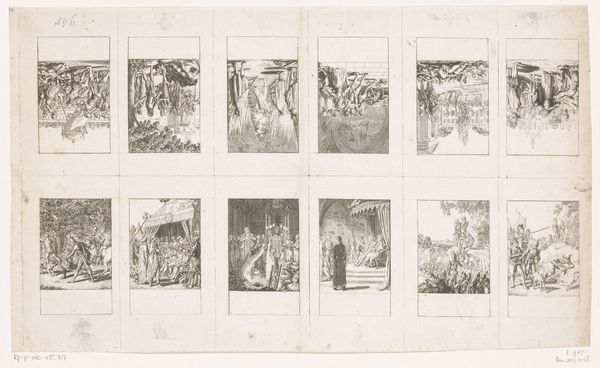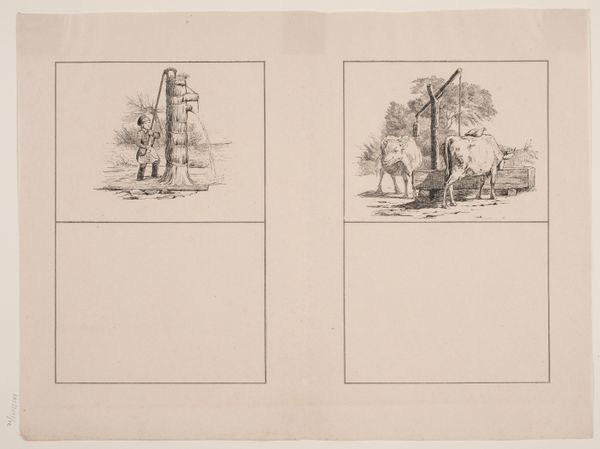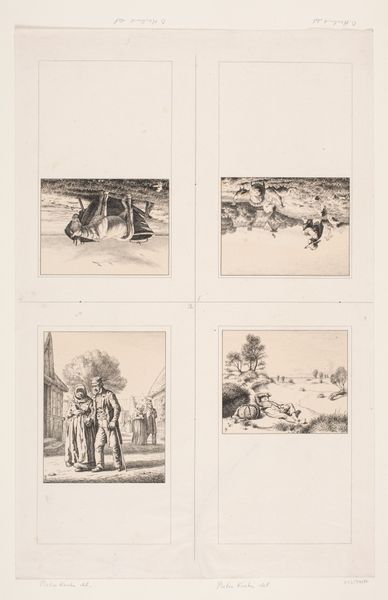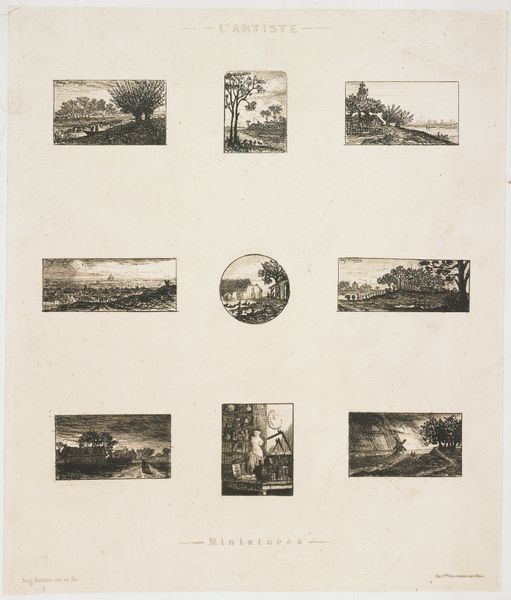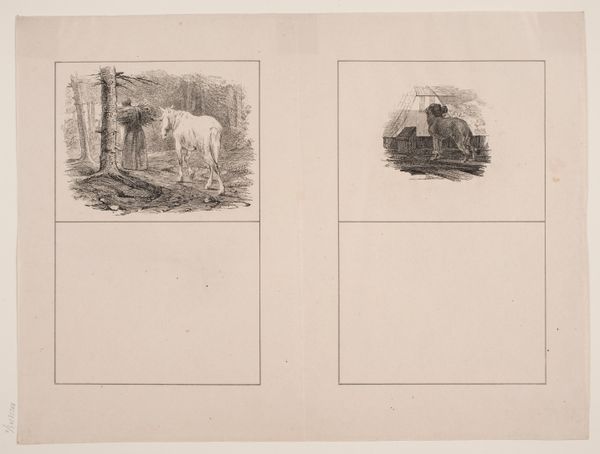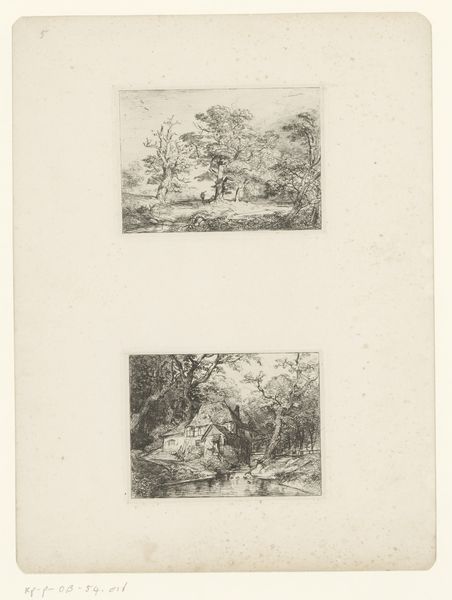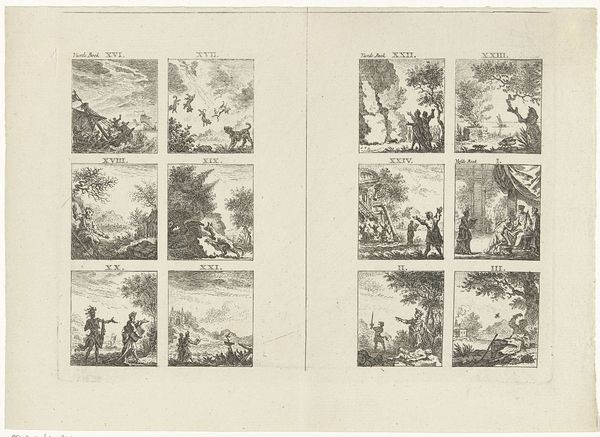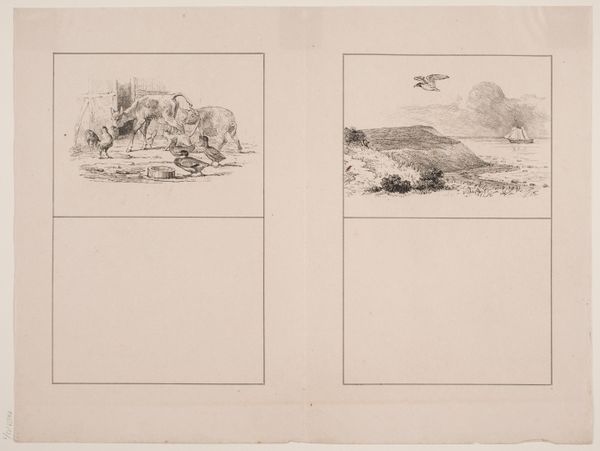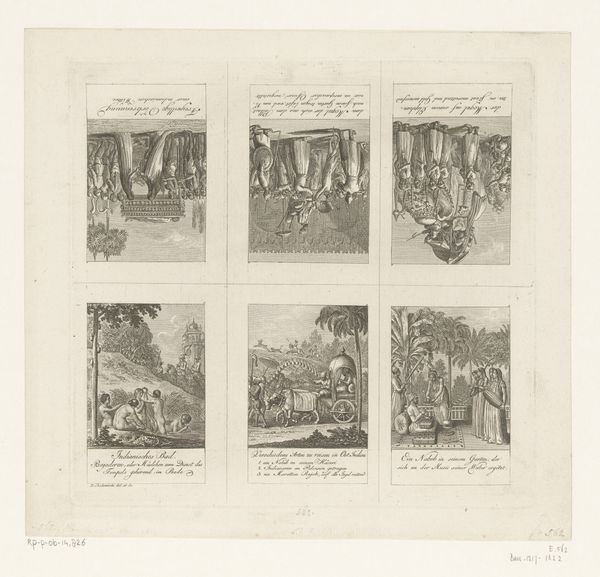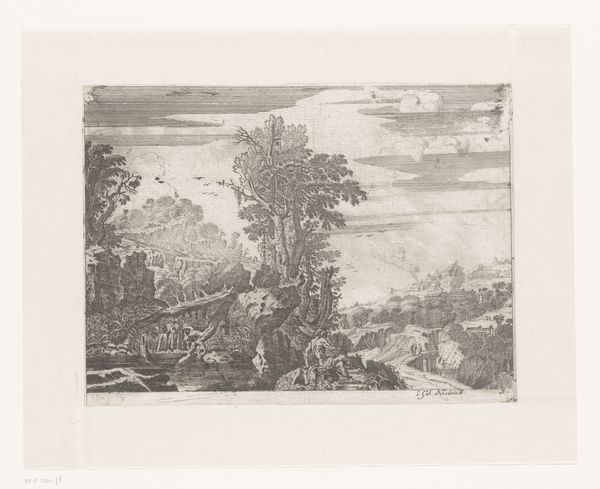
drawing, print, etching
#
drawing
#
dutch-golden-age
# print
#
etching
#
landscape
#
figuration
Dimensions: height 226 mm, width 309 mm
Copyright: Rijks Museum: Open Domain
Curator: Karel du Jardin, active during the Dutch Golden Age, is responsible for this fascinating print called "Acht studies en kleine landschappen," created sometime between 1652 and 1659. It's currently housed at the Rijksmuseum. Editor: What strikes me immediately is how intimate it feels, despite the array of scenes. Each little window onto the world, etched so delicately, invites you to lean in and really look. There's a tender stillness to it all, like capturing fleeting moments. Curator: Precisely. As an etching, it lends itself to that intimacy, doesn't it? The fineness of the lines...and the way du Jardin uses light and shadow to create depth within such a small space is truly remarkable. Each vignette functions almost as a study sheet. He offers landscapes mixed with character studies—figures intertwined in their worlds. Editor: There’s a visual memory happening here. I'm struck by the top left block with the figure duo. It is as if he has captured archetypes of protector and protected, which reverberates down into the bottom center's herder image—his animals safe near him. What narratives are intertwined? I'd say its more of a cultural storage device that attempts to record a social memory rather than an observational field trip across Holland. Curator: An interesting point about social memory, it is so evocative... Look, the piece almost insists we connect those disparate elements. The crumbling building could mean power, wealth or hope; how can the humble rural workers compete in the same image as architectural assertions? And those faces up top! He is deliberately layering a set of semiotic relations, don't you agree? Editor: I see your point! The buildings do evoke a certain classical, maybe even spiritual weight... juxtaposed with these common laborers or simple pastoral settings! They remind us of a relationship with the landscape we maybe once romanticized. He definitely had an agenda. The faces may be studies in contrast; do they serve the social fabric, or will the social fabric control their humanity. A question of power again, maybe? Curator: The open landscape vignettes towards the bottom have such fresh affect; they could serve to offer contrast from any claustrophobia in the head and shoulder blocks above. I keep seeing those faces from the Roman Forum staring back at me! Du Jardin might offer us that rural simplicity or openness to save our burdened psyche. A way to refresh that social memory of burdens with new vistas? I like this more now! Editor: Yes, seeing them both I’ve started believing in his argument—or whatever thesis he proposed with this composition. Thanks to the subtle detail work, all the scenes really feel pulled together and I have now moved my perspective to yours. A reminder of how much one can discover within what seems at first glance simple etched line-work... Curator: Indeed! He invites us on a thought-provoking expedition across our shared world. I think I prefer etchings. They are the literary novel of artistic printmaking.
Comments
No comments
Be the first to comment and join the conversation on the ultimate creative platform.

